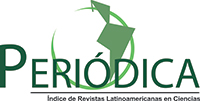PREVALENCE OF INTRINSIC RISK FACTORS FOR PATIENTS IN FALL OUTCOMES IN A SURGICAL CLINIC
DOI:
https://doi.org/10.5380/ce.v21i5.45342Keywords:
Accidental falls, Patient safety, Risk factors, Security measures, Nursing.Abstract
This study aimed to identify the prevalence of intrinsic fall risk factors during a patient’s hospitalization. It also involved a search for records of patients’ falls in January 2015 in a surgical hospitalization unit. Research was conducted from January to March 2015. Presence and absence of risk factors intrinsic to falling were considered. Five cases (5.1%) of falling were registered in 98 participants. Association of risk factors in patients that had fallen showed that 100% (5) of patients had risk factor of impaired vision, 80% (4) were more than 65 years old and had anemia. The principal focus was to reduce fall occurrences in the setting of this study. Future research intends to delve deeper on the subject of educational technology development in order to reduce the incidence of falling in the studied setting.
References
Brasil. Ministério da Saúde, ANVISA e Fiocruz. Protocolo Prevenção de Quedas. PROQUALIS, 2013.
Diccini S, Pinho PG, Silva FO. Assessment of risk and incidence of falls in neurosurgical inpatients. Rev Latinoam Enferm. 2008;16(4):752-7.
Severo IM, et al. Fatores de risco para quedas em pacientes adultos hospitalizados: revisão integrativa. Rev Esc Enferm USP. 2014;48(3):540-54.
Teixeira TCA, Cassiani SHB. Análise de causa raiz de acidentes por quedas e erros de medicação em hospital. Acta Paul Enferm. 2014; 27(2):100-7.
Paiva MCMS, et al. Caracterização das quedas de pacientes segundo notificação em boletim de eventos adversos. Rev Esc Enferm USP. 2010;44(1):134-8.
National Patient Safety Agency. The third report from the patient safety observatory. Londres, 2007.
Marcolino JAMM, et al. Medida da Ansiedade e da Depressão em Pacientes no Pré-Operatório. Estudo Comparativo. Rev Bras Anestesiol. 2007;57(2):157-166.
Menezes RL, Bachion MM. Estudo da presença de fatores de riscos intrínsecos para quedas, em idosos institucionalizados. Ciênc e saúde colet. 2008;13(4):1209-18.
Fabian C, et al. Prevalência de anemia e fatores associados em mulheres adultas residentes em São Leopoldo, Rio Grande do Sul, Brasil. Cad. Saúde Pública. 2007;23(5):1199-1205.
Costa ICP, et al. Fatores de risco de quedas em idosos: produção científica em periódicos online no âmbito da saúde. R bras ci Saúde. 2012;16(3):445-52.
Vitor AF, Lopes MVO, ARAUJO TL. Diagnóstico de enfermagem risco de quedas em pacientes com angina instável. Rev. Rene. Fortaleza. 2010;11(1):105-113.
Silva APM, Santos VLCG. Prevalência da incontinência urinária em adultos e idosos hospitalizados. Rev Esc Enferm USP. 2005;39(1):36-45.
Marin HF, Bourie P, Safran C. desenvolvimento de um sistema de alerta para prevenção de quedas em pacientes hospitalizados. Rev. latino-am. Enfermagem. 2000;8(3):27-32.
Remor CP, Cruz CB, Urbanetto JS. Análise dos fatores de risco para queda de adultos nas primeiras 48 horas de hospitalização. Rev Gaúcha Enfer. 2014;35(4):28-34.
Machado TR. Avaliação da presença de risco para queda em idosos. Rev Elet Enf. [Internet] 2009;11(1):32-8 [acesso em 10 mar 2015] Disponível: <http://www.fen.ufg.br/revista/v11/n1/v11n1a04.htm>. Acesso em: 10 mar. 2015.
Costa AGS, et al. Fatores de risco para quedas em idosos. Rev Rene. 2013;14(4):821-8.
Costa-Dias MJM, et al. Quedas dos doentes internados em serviços hospitalares, associação com os grupos terapêuticos. Rev. Enf. Ref. 2013;2(29):105-114.
Downloads
Published
How to Cite
Issue
Section
License
Cogitare Enfermagem reserves the right to make normative, orthographic, and grammatical changes to the published article to maintain the cultured standard of the language, while respecting the authors' style.
The published study is the sole responsibility of the author(s), and Cogitare Enfermagem is exclusively responsible for evaluating the manuscript as a scientific publication vehicle. Revista Cogitare Enfermagem is not responsible for any violations of Law No. 9,610/1998, the Brazilian Copyright Law.
Cogitare Enfermagem allows the author to hold the copyright of articles accepted for publication, without restrictions.
The articles published are licensed under the Creative Commons license CC BY 4.0 Creative Commons - Attribution 4.0 International - CC BY 4.0 - The attribution adopted by Cogitare Enfermagem is permitted:
- Share - copy and redistribute the material in any media or format.
- Adapt - remix, transform and build upon the material for any purpose, even commercially.
- Attribution - You must give proper credit, provide a link to the license, and indicate if changes have been made. You may do this in any reasonable way, but not in a way that suggests that the licensor endorses it or approves of its use.
- No additional restrictions - You may not apply legal terms or technological measures that legally restrict others from doing something that the license allows.



















